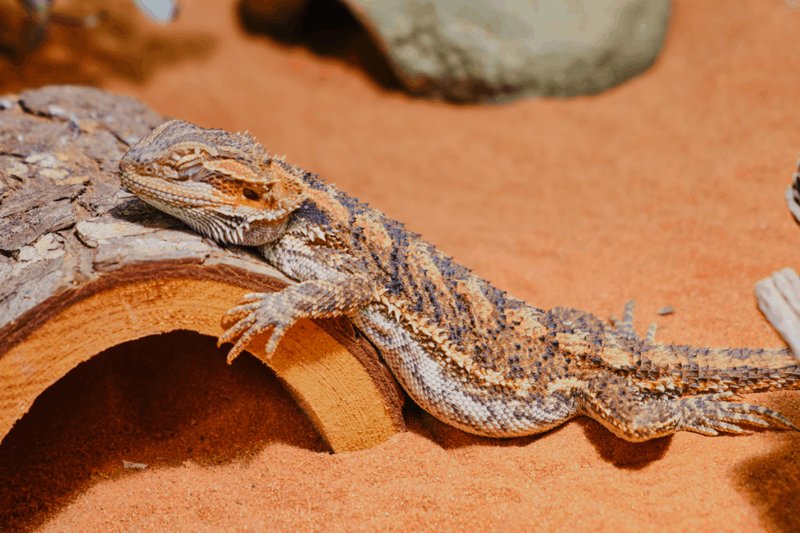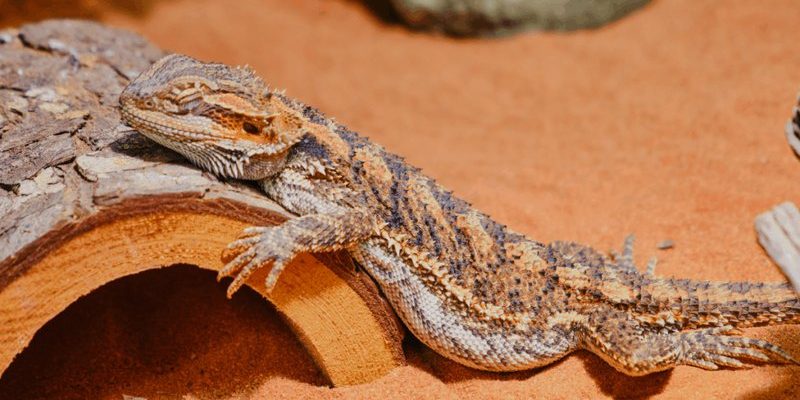
During this period, your little scaly friend might become less active, eat less, and want to hide away a bit more than usual. Here’s the interesting part—brumation isn’t just something your bearded dragon chooses to do; it’s tied to their instinctual behavior, helping them conserve energy and survive through the cooler months. If you’ve ever wondered how to properly manage this phase, you’re not alone! Let’s dive into what brumation really means and how you can support your bearded buddy during this unique time.
What Exactly Is Brumation?
Brumation is a term that comes from the behavior of reptiles when the weather gets colder. Unlike mammals that hibernate, reptiles are ectothermic, meaning their body temperature depends on their environment. Brumation allows them to cope with lower temperatures and less food availability. For bearded dragons, brumation usually happens in fall or winter, especially if they’re kept in environments that mimic seasonal changes.
You might notice your bearded dragon displaying a few recognizable signs during brumation. They might burrow themselves in their substrate or find a cozy spot in their enclosure. Their activity level drops, and they may take very few bites of food—this is all perfectly normal! Just as bears retreat to caves, your dragon seeks shelter in the warmth of its home.
Understanding this process is key to being a responsible pet owner. For many owners, the first brumation can be worrying. You might find yourself asking, “Is my dragon sick?” or “Should I be feeding them more?” Knowing what to expect can ease those concerns and help you provide the right care.
Signs That Your Bearded Dragon Is Brumating
Identifying when your bearded dragon is entering brumation is essential for appropriate care. Some of the main signs include:
- Reduced Activity: Your dragon might seem more lethargic than usual, spending less time basking or exploring.
- Less Eating: A noticeable decline in appetite is common. They may skip meals or only nibble occasionally.
- Seeking Hiding Spots: If your dragon burrows into substrate or stays hidden, this is a sign they’re looking for a snug place to settle down.
- Temperature Regulation: You might notice they prefer cooler areas in their enclosure, as their body wants to adjust to the dropping temperatures.
Keep in mind that these signs can resemble other health issues. If you notice drastic changes or fear your bearded dragon might be unwell, it’s wise to consult a vet. But in many cases, these behaviors simply mean your dragon is ready for a little downtime.
How Long Does Brumation Last?
The duration of brumation can vary widely from one bearded dragon to another. It usually lasts anywhere from a few weeks to several months. Younger dragons might not brumate as long as older ones, so if you have a baby bearded dragon, don’t be surprised if they don’t show many signs of brumation at all.
Typically, adult bearded dragons might enter brumation around the age of 1-2 years. During this time, their metabolic rate slows down significantly, helping them conserve energy. You might think of it like a long nap during a cold winter: they wake occasionally but mostly rest.
If you’re unsure how long your dragon’s brumation will last, just be patient. Monitor their behaviors and create an environment that supports their natural instincts. Each dragon is unique, so don’t set strict dates—let them guide you in their own way.
How to Prepare for Brumation
Preparing for your bearded dragon’s brumation phase is crucial. Here are some steps you can take to make sure they remain comfortable and healthy:
1. Adjust the Temperature:
Make sure your dragon has a suitable place to cool down. While it’s usually best to maintain their enclosure temperature, providing a cooler area will let them regulate their body heat naturally.
2. Watch Their Diet:
Before they enter brumation, ensure they’re eating a balanced diet. A well-fed dragon is more likely to handle the brumation phase smoothly.
3. Maintain Hygiene:
Clean their habitat regularly. A tidy space helps avoid any potential issues while they’re less active.
4. Provide Hiding Spots:
Ensure there are warm, safe hiding spots in the enclosure. These can be hides made of wood, rocks, or even cardboard boxes—whatever makes your dragon feel safe and snug.
By taking these steps, you’ll help create the best environment for your bearded dragon during their brumation. It’s like preparing your home for a long winter—make it cozy and welcoming!
What to Do During Brumation
Once your bearded dragon is in brumation, you might wonder how to handle it. Here’s what you should keep in mind:
– Limit Handling:
Your dragon is likely to be less sociable during this time. Try to minimize handling unless necessary. This way, they can focus on resting and conserving energy.
– Monitor Health:
Check in on them regularly, but don’t startle them. Keep an eye on their weight and make sure they’re still hydrated. If you see any unusual behaviors that concern you, contact a vet.
– Provide Water:
Even though they may eat less, it’s important to ensure they have access to fresh water. Hydration is crucial, especially if they choose to wake up occasionally.
– Be Patient:
Brumation is a natural process. Sometimes, it might feel like forever to you, but your bearded dragon knows what they’re doing. Just like how we trust our bodies to guide us through sleep cycles, they have their clock too.
Respecting their need for entry into this state can help cultivate a trusting bond between you and your dragon.
When to Be Concerned
While brumation is normal, some signs could indicate something’s wrong. Here are a few situations to watch for:
– Dramatic Weight Loss: If your dragon loses a significant amount of weight during brumation, it might be best to consult a vet.
– Persistent Lethargy: If your dragon continues to be inactive long after the typical brumation period, it could signal an underlying issue.
– Strange Behaviors: If they’re acting unusually aggressive or seem distressed, it’s good to check in on them.
In these cases, a visit to a reptile-savvy veterinarian can provide peace of mind. Remember, while brumation is a natural part of their life, your pet’s health should always be a top priority.
Caring for a bearded dragon during brumation doesn’t have to be a daunting task. With a bit of understanding and patience, you can create a supportive environment for your pet during this unique phase. It’s all about respecting their nature and giving them the space they need.
So, the next time your dragon starts to slow down, remember: they’re just doing what they’ve been programmed to do. With proper care and a little attention, you’ll help them through the winter months like a pro. Whether you’re a first-time owner or seasoned reptile enthusiast, embracing this natural process can strengthen your bond with your scaly friend.

